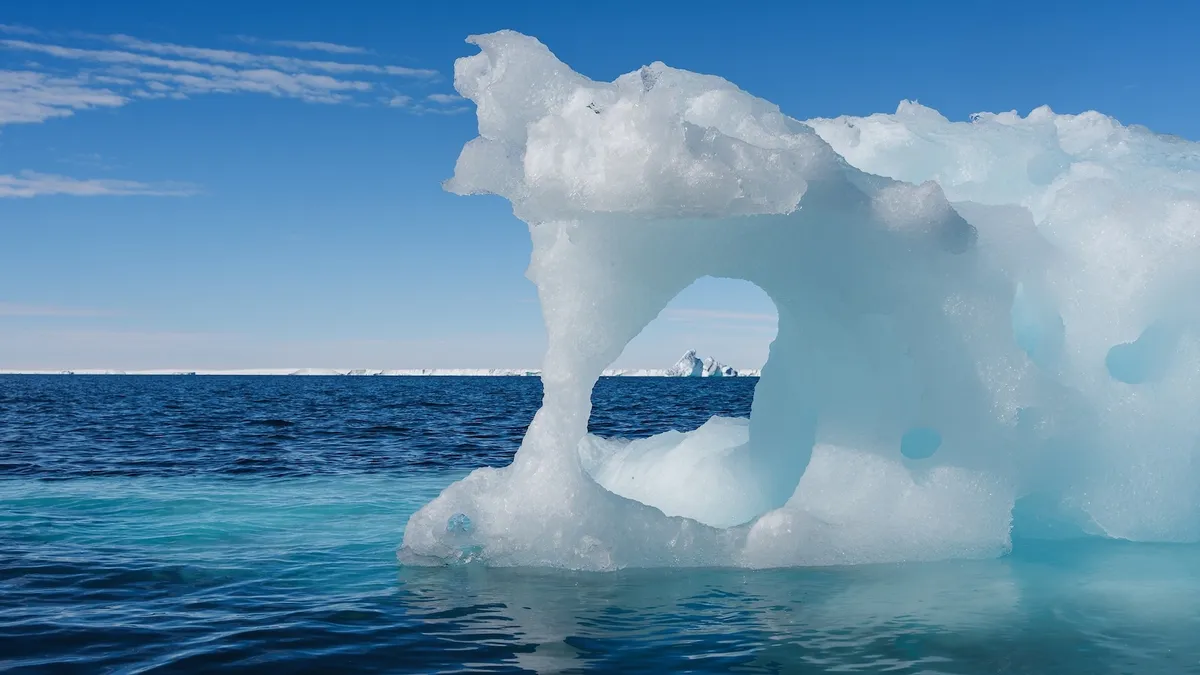
A colossal iceberg, approximately the size of Chicago, has fractured from the Antarctic ice shelf, unveiling a vibrant and previously hidden ecosystem beneath its icy surface. This significant event occurred on January 13, when the iceberg, designated A-84, detached from the George VI Ice Shelf, a massive floating glacier that is part of the Antarctic Peninsula ice sheet, as reported by the Schmidt Ocean Institute.
Prior to the iceberg's calving, the seafloor beneath a vast area of 209 square miles of ice remained inaccessible to human exploration. A dedicated team of researchers aboard the Schmidt Ocean Institute’s R/V Falkor (too), a state-of-the-art oceanographic research vessel, was initially conducting research in the Bellingshausen Sea on the western side of the Antarctic Peninsula. However, upon learning about the iceberg's break, the team swiftly altered their expedition plans. Schmidt Ocean Institute Executive Director Jyotika Virmani described this pivot as a "serendipitous moment."
Patricia Esquete, the expedition's co-chief scientist and a biology researcher at the Centre of Marine and Environmental Studies in the U.S. Virgin Islands, emphasized the urgency of their mission: "We seized upon the moment, changed our expedition plan, and went for it to look at what was happening in the depths below."
Arriving at the iceberg site on January 25, the research team utilized a remotely operated vehicle named SuBastian to explore the seafloor over an eight-day period. This vehicle dived nearly a quarter mile deep to collect data on the geology, physical oceanography, and biology of this untouched underwater terrain. To the researchers' astonishment, they discovered a beautiful and thriving ecosystem, which Esquete described as surprising due to its significant biomass and biodiversity.
Typically, deep-sea ecosystems depend on nutrients from the surface that gradually trickle down to the seafloor. However, the presence of a 500-foot-thick ice cover posed challenges for such nutrient flows. This has led marine scientists to hypothesize that ocean currents might play a crucial role in transporting essential nutrients to this newly discovered ecosystem.
The species identified in this previously unknown ecosystem include large corals, sponges, and a variety of marine life such as icefish, giant sea spiders, and octopuses. The researchers believe that several of the species present are likely undiscovered. According to Esquete, based on the size of these animals, the communities have likely been residing in this location for decades, if not hundreds of years.
Despite the groundbreaking discoveries, little is known about the seafloor beneath the floating ice shelves in Antarctica. Researchers have noted that over the last few decades, global warming has caused the Antarctic Peninsula ice sheet to shrink significantly, leading to mass loss. Satellite images from NASA illustrate the progression of the iceberg's break from the George IV Ice Shelf from January through February 2025.
Antarctica is also home to the Thwaites Glacier, often referred to as the "Doomsday Glacier" due to its potential to contribute to severe global sea level rise if it continues to melt. Sasha Montelli, an expedition co-chief scientist and researcher at University College London, stated, "The ice loss from the Antarctic Ice Sheet is a major contributor to sea level rise worldwide."
The newly exposed seafloor has provided an international team of scientists with a unique opportunity to gather critical data regarding the past behavior of the larger Antarctic ice sheet. Autonomous underwater vehicles, known as gliders, were deployed to study the effects of glacial meltwater on the physical and chemical properties of the region. Preliminary findings indicate a strong meltwater flow from the George IV Ice Shelf, according to the Schmidt Ocean Institute.
Montelli emphasized the importance of their work, stating, "Our research is crucial for providing a longer-term context for these recent changes, improving our ability to make future projections—projections that can inform actionable policies. We will undoubtedly make new discoveries as we continue to analyze this vital data."